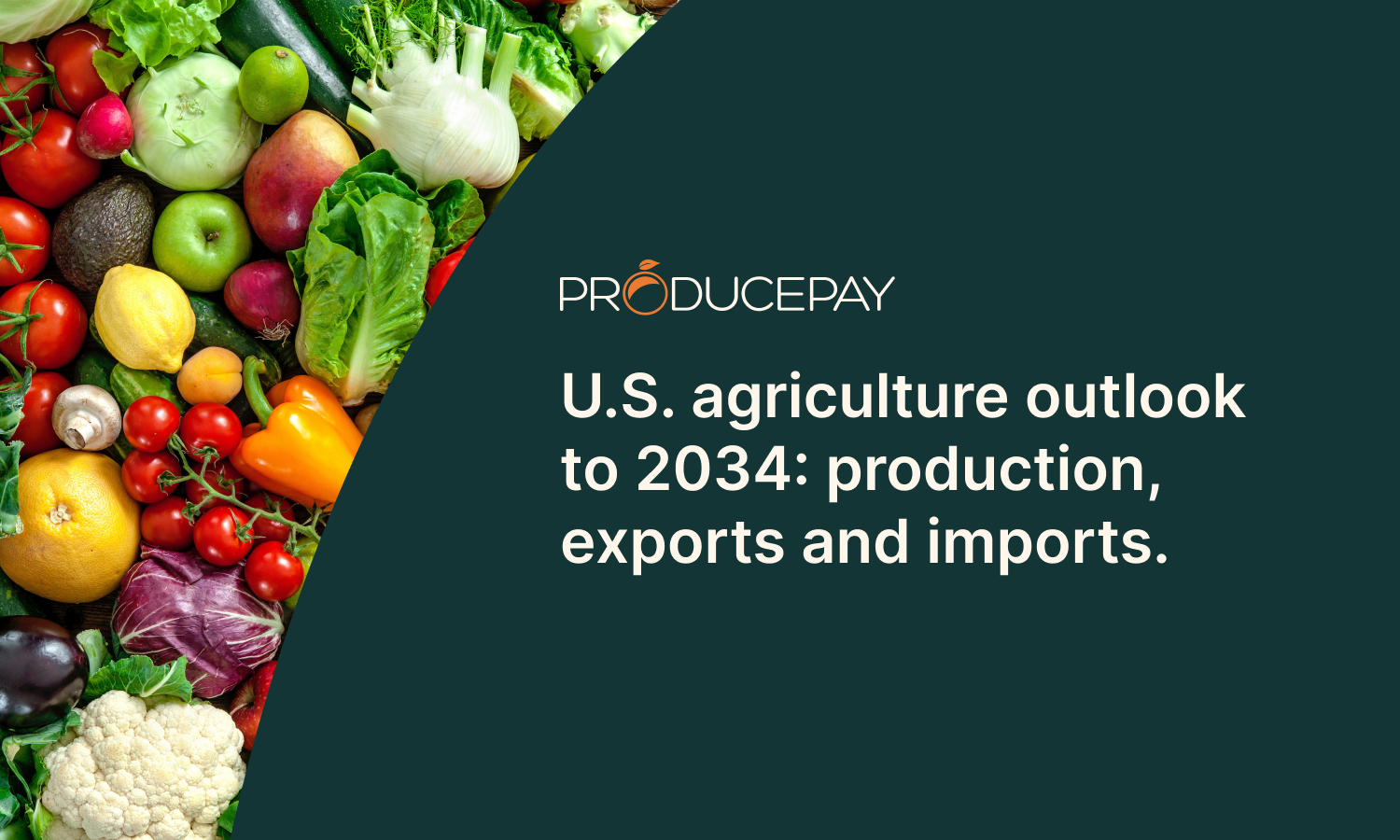
U.S. agriculture outlook to 2034: production, exports and imports
The U.S. agricultural sector presents a mixed outlook through 2034, according to projections from the USDA. While the total production value is expected to rise, overall volume will slightly decline.
U.S. agricultural exports will grow at a moderate pace, while imports—especially of fresh fruits and vegetables from Latin America—will continue to rise steadily.
Production: higher value, slightly lower volume
By 2034, the total production value of fruits, vegetables, and tree nuts in the U.S. is expected to reach $68.8 billion, up from $56.5 billion in 2023.
However, total production volume will see a slight decline, from 87.7 million tons in 2023 to 87.35 million tons in 2034—less than a 1% drop, but indicative of stagnation in domestic output.
Fresh vegetable production will remain relatively stable in volume but increase in value by 26% over the next decade, with crops like lettuce, onions, melons, and carrots playing a key role.
Fruit and nut production will hover around 25 million tons annually, led by non-citrus fruits like grapes and apples, which together will account for nearly 80% of non-citrus fruit volume.
Meanwhile, citrus production will continue its downward trend—particularly in oranges and grapefruits—and will only begin to stabilize around the middle of the next decade. Despite this, citrus value is expected to grow by 40% due to higher prices. California will remain the leading producer of fresh citrus in the U.S.
 Exports: steady but moderate growth
Exports: steady but moderate growth
U.S. agricultural exports are expected to decline slightly through 2025, bottoming out at $170 billion, before rebounding with an average annual growth of 2.7%—reaching $217.4 billion by 2034.
For fruits, vegetables, and tree nuts, export growth will be slower—around 2% per year—rising from $40.9 billion in 2024 to $49.8 billion by 2034. This growth will be driven largely by nut exports, with processed products contributing lesser.
Imports: growth with Latin America as key source
The most significant change lies in U.S. agricultural imports. Due to the combination of stagnant domestic production and rising consumer demand, imports have been growing steadily.
Imports are projected to reach a record $215.5 billion in 2025 and continue climbing at an average rate of 2.9% annually, totaling $277.9 billion by 2034.
Horticultural products are the largest import group, accounting for about 50% of total import value. Fresh fruits and vegetables will see the fastest growth, from $35.6 billion in 2025 to significantly higher levels by 2034, growing at an average rate of 4.2% per year.
Avocados, berries, and citrus fruits will continue to lead the way, with Mexico, Peru, Chile, and Colombia as the main suppliers. For instance, U.S. avocado imports from Mexico are projected to grow 5% in 2025, reaching 1.34 million metric tons. Additional growth is also expected from Colombia and Peru.
A key moment for the U.S. fresh produce supply chain
These projections place Latin American exporters in a pivotal position to help meet U.S. demand. But with that opportunity comes increasing pressure: it’s no longer enough to source quality produce.
U.S. buyers will need suppliers that can offer stable volumes, predictable prices, and financial reliability in the face of market volatility.
That’s where ProducePay’s Predictable Commerce Programs can deliver real value. These programs are designed to align buyer’s procurement needs with a reliable network of Latin American growers—ensuring year-round availability and price stability.
Additionally, they empower growers through access to financial tools like seasonal working capital and advance payments on shipments. This leads to stronger partnerships, greater efficiency, and lower risk for buyers.
If you’re looking to secure a more predictable and resilient fresh produce supply chain, connect with a ProducePay expert and discover how our programs can help you grow with confidence.

